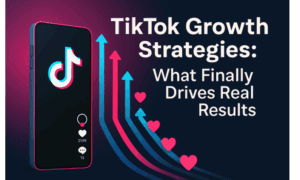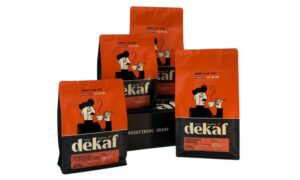Engage viewers quickly; the initial few seconds are crucial. Start with a hook that captivates attention, whether it’s an intriguing question or an eye-catching visual. Research indicates that most users decide within three seconds whether to continue watching. This makes your opening sequence vital for retention, especially in native video advertising, where maintaining interest without disrupting the user experience is key.
Focus on creating authentic content that resonates with your audience. Consider aligning your native video advertising closely with the editorial style of the platform where it will appear. For instance, a platform like Instagram thrives on visually engaging and relatable content. Tailor your videos to reflect the users’ interests, ensuring they blend seamlessly with their feed.
Optimizing Video Length for Audience Engagement
Keep your native video ads between 15 to 30 seconds. This duration captures attention while delivering a concise message. Research indicates that viewers’ attention spans decrease significantly after 30 seconds.
For platforms like Instagram or TikTok, aim for videos closer to 15 seconds. Users scroll quickly, and short, snappy content keeps them engaged. In contrast, longer videos can work for platforms such as YouTube, where viewers are more inclined to watch content that exceeds 30 seconds, provided it adds value.
Test different lengths to determine what resonates best with your audience. Utilize analytics tools to track engagement rates. Look for patterns in viewer retention and adjust your video lengths accordingly. If viewers drop off significantly at the 20-second mark, consider tightening your message.
Incorporate hooks in the first few seconds. Start with a question, a surprising fact, or a captivating visual. This approach increases the likelihood of retaining viewers and encourages them to watch the entire video.
Maintain a clear structure. Present your key message quickly, followed by supporting details. Avoid unnecessary filler content. Prioritize capturing attention and retaining it by staying focused on the core message.
Consider your target demographic. Different audiences may have varying preferences regarding video length and content style. Tailor your videos based on the insights gathered from your audience analysis.
Finally, encourage interaction. Include calls to action at the end to guide viewers on what to do next. This could be visiting a website, following your brand on social media, or commenting on the video. Engagement doesn’t end with the video; make it a starting point for further connection.
Platforms for Launching Native Video Ads
For a successful native video advertising campaign, consider using platforms like Facebook, Instagram, and YouTube. Each platform offers unique features designed to enhance viewer engagement. Facebook provides robust targeting options and allows ads to blend seamlessly into news feeds. Instagram’s visually-driven format captures attention quickly with stories and in-feed ads that feel organic.
YouTube stands out with its extensive reach and diverse audience. Utilizing TrueView ads enables advertisers to pay only when viewers watch their video, ensuring cost-effectiveness. Don’t overlook TikTok, a rapidly growing platform that encourages creativity and user interaction through short-form videos, making it ideal for brands targeting younger demographics.
Programmatic advertising platforms like AdRoll and Taboola facilitate the placement of native video ads across various sites, ensuring a wider reach. These platforms leverage AI for optimizing ad placements based on user behavior and preferences, offering a more personalized advertising experience.
For brands focused on content marketing, Outbrain and Revcontent provide opportunities to place native video ads within content recommendations, allowing ads to appear in the context of relevant articles and blogs. This strategy enhances engagement by reaching viewers when they are most receptive.
Lastly, consider using online publishing networks such as Sharethrough and Teads, which focus on native ad formats across premium publishers. This approach not only increases visibility but also builds credibility by associating with well-established content platforms.
Measuring Success: Key Metrics for Video Campaigns
To gauge the performance of your video campaigns, focus on these critical metrics:
- View Count: This metric indicates how many times your video has been viewed. A higher view count suggests effective reach and audience interest.
- Watch Time: Analyze total watch time to understand how long viewers engage with your content. Longer watch times often correlate with compelling content and strong audience retention.
- Engagement Rate: Measure interactions such as likes, shares, and comments. A higher engagement rate signifies that viewers find your video appealing and relatable.
- Click-Through Rate (CTR): This metric reflects the percentage of viewers who click on your call-to-action (CTA) after watching your video. A robust CTR indicates an effective and persuasive CTA.
- Conversion Rate: Track how many viewers complete a desired action after watching your video, such as signing up for a newsletter or making a purchase. This metric is key for assessing ROI.
- Audience Retention: Analyze at which points viewers drop off in your video. Identifying these points helps refine future content for better retention.
- Play Rate: Measure how often your video is played when presented as an advertisement. A higher play rate indicates appealing packaging and targeting.
By concentrating on these metrics, you can obtain actionable insights to enhance your video marketing strategy. Regularly analyze these figures to adjust your approach and optimize future campaigns effectively.
Creative Best Practices for Compelling Video Content
Focus on storytelling. Create a narrative that resonates with your audience by weaving emotions and relatable experiences into your video. Start with a hook that captures attention within the first few seconds. Use a strong visual or an intriguing question to draw viewers in.
Optimize for mobile viewing. Ensure your videos are accessible on smartphones and tablets, as a significant portion of audiences consume content on these devices. Keep videos short, ideally under two minutes, to retain viewer interest and engagement.
Incorporate high-quality visuals and audio. Invest in clear sound and well-lit footage. Poor audio can detract from even the most captivating visuals, so prioritize clarity and professionalism in both aspects.
Utilize subtitles. Offering closed captions not only caters to viewers watching without sound but also enhances accessibility for a broader audience. This small addition can significantly expand your viewer base.
Engage your audience with interactive content. Encourage likes, shares, and comments by including call-to-action prompts within your video. Pose questions or create polls to stimulate conversation and deepen viewer involvement.
Leverage analytics to refine your approach. Monitor viewer retention rates and engagement metrics to gauge what resonates best. Adjust your content and strategies based on this data to continually improve your video effectiveness.
Test different formats and styles. Keep experimentation part of your strategy. Try testimonials, tutorials, or behind-the-scenes footage to discover which formats yield the highest engagement for your specific audience.
Collaborate with influencers. Partnering with individuals who align with your brand can amplify your message and reach new audiences. Authentic endorsements can enhance trust and interest in your video content.
Finally, maintain consistency. Develop a recognizable style that reflects your brand identity. Consistent elements, such as logos or color schemes, help viewers instantly identify your content across different platforms.
Curious about blending ads naturally? Learn how native advertising seamlessly integrates promotional content for higher engagement – https://www.mgid.com/native-advertising
Integrating Native Video Ads into Overall Marketing Strategy
Begin by identifying your target audience. Use analytics tools to gain insights into their preferences, viewing habits, and platforms. This helps create relevant video content that resonates with them.
Next, align native video ads with your brand message. Ensure that the video’s tone, visuals, and content reflect your brand identity, enhancing recognition and recall across different channels.
Utilize storytelling techniques. Create narratives that engage viewers emotionally, making them more likely to react positively. Well-crafted stories increase the effectiveness of your message, turning casual viewers into loyal customers.
Distribute content strategically. Choose platforms where your audience spends time and choose ad placements that feel organic. Social media, blogs, and news websites are excellent choices for native video ads, providing seamless integration within user experience.
| Platform | Audience Insights | Ad Format |
| 18-34 years old; visual content lovers | In-feed, stories | |
| Various age groups; community-driven content | In-stream, news feed | |
| YouTube | Wide age range; entertainment seekers | Pre-roll, mid-roll |
Incorporate user-generated content. Encourage your audience to share their experiences with your brand. This not only builds community but can also provide authentic video content that resonates well with potential customers.
Monitor engagement metrics constantly. Analyze data such as view rates, shares, and click-through rates. Use this information to adjust strategies, focusing on high-performing content and formats.
Finally, test A/B variations of your ads. By experimenting with different content types, presentation styles, and calls-to-action, you can identify the most effective combinations for your audience.



































